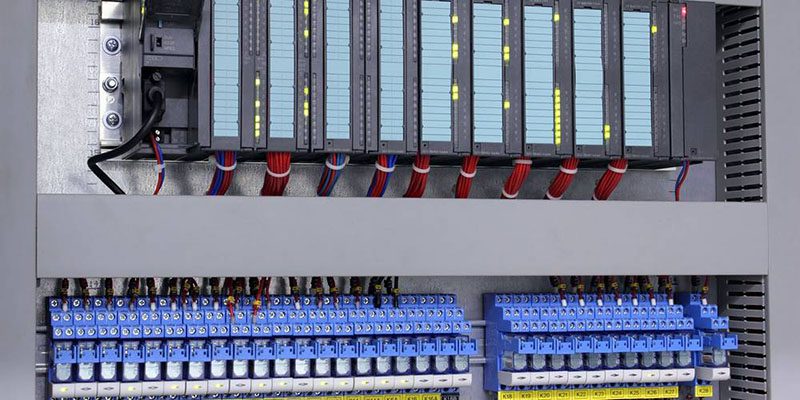Our News
Contact Us
- Tel:0086-135 8771 2673
- Tel:0086-135 8771 3265
- Email:[email protected]
- Address:No.666 East Jiaotong Rd.,Wu'niu Street,Yongjia,Wenzhou,Zhejiang,China
How to Choose the Right Industrial Relays?
News | Aug 14,2023
Selecting the right industrial relays is critical to ensuring the efficiency and safety of various industrial operations. Relays play a vital role as the vital link between low-power control systems and high-power applications.
This blog is intended to give you a comprehensive understanding of the complexities involved in selecting the perfect industrial relay for your specific requirements.
Understanding the World of Relays
At the heart of a relay are electromechanical switches, which are often used in environments where low-power control signals are used to control high-power or high-voltage circuits.
Their wide range of applications includes industrial automation, control systems, automotive systems, telecommunications, and more. Their main components include:
Coil
The triggering part of the relay is usually an electromagnet. When current is passed through the coil of an electromagnet, a magnetic field is created. This magnetic field then attracts the movable armature or contact, causing it to move toward the fixed contact of the relay.
The movement of the armature closes or opens the contacts, depending on the type of relay. This action allows or interrupts the flow of electricity in the circuit connected to the relay.
Essentially, when the electromagnet is energized, it causes the relay to operate by causing the contacts to change state.
Contacts
When the coil is energized, the normally open contacts close, allowing current to flow and forming a circuit. This can be used to activate another device or control system.
Conversely, when the coil is de-energized, the normally closed contacts open, breaking the circuit and stopping current flow. This can be used to deactivate equipment or control systems.
NO and NC contacts are commonly used in a variety of applications such as relays, motor control circuits, timers and safety interlocks. The state of these contacts can be monitored and used to control the operation of different components in the system.
Armature
The moving part that moves between the contacts, changing the state of the contacts when the coil is energized is called a relay.
A relay is an electrical switch that uses an electromagnet to move a mechanical armature, which in turn changes the position of the contacts to change the state of an electrical circuit.
When the coil is energized, it creates a magnetic field that attracts or repels the armature, causing it to close or open the contacts.
Factors To Consider When Choosing Industrial Relays
Purpose & Application
Considering the use and application of the relay, there are mainly the following factors:
Load Type and Rating: When determining the nature of the load, it is important to determine whether the load is resistive (such as a heater), inductive (such as a motor), or capacitive. Each type of load has its specific current rating which should be taken into consideration.
Switching Frequency: Relays vary according to their switching needs, from infrequent to high frequency operation.
Duration of operation: The duration for which a relay remains on directly affects its lifespan and ability to withstand heat.
Environment & External Factors
The external operational milieu can significantly sway relay performance:
Temperature Sensitivity: Some relays thrive in elevated temperatures, a must for certain industrial settings.
Moisture & Humidity: If operating in damp conditions, consider hermetically sealed relays to ward off corrosion.
Vibration Concerns: In mechanically intense environments, vibration-resistant relays are paramount.
Sizing and Installation
The relay’s physical dimensions and mounting mechanisms can influence its compatibility:
Physical dimensions: The size and shape of the relay should be compatible with the available space in the intended installation location. If the relay is too large or too small, it may not fit properly or cause interference with other components.
Mounting mechanisms: The mounting mechanism of the relay should be compatible with the mounting options available in the system. Common mounting mechanisms for relays include screws, clips, or snap-in mounts. If the mounting mechanism is not compatible, the relay may not be securely attached or may not fit into the system at all.
Cost-effective Solutions for Your Industrial Relay Needs
Industrial relays are critical components in many automation and control systems. When looking for a cost-effective solution to your industrial relay needs, here are a few types to choose from:
Electromechanical relays: These relays are widely used and offer a cost-effective solution for most industrial applications. They are available in various sizes and configurations to meet different requirements.
Solid-state relays (SSRs): SSRs offer advantages such as long life, no mechanical contacts, and faster switching times compared to electromechanical relays. Although they may have a slightly higher upfront cost, their long-term reliability can lead to cost savings.
Programmable logic controllers (PLCs): PLCs are versatile devices that integrate relays and other control functions in a single unit. They can automate complex industrial processes and offer cost savings by reducing wiring and simplifying maintenance.
Relay boards/modules: These are pre-wired and pre-packaged relay modules that can be directly integrated into industrial systems. They are cost-effective as they eliminate the need for separate relay wiring and assembly.
Energy-efficient relays: Choosing relays with low power consumption and high efficiency can result in long-term cost savings in energy bills.
Conclusion
Selecting the right industrial relays is critical to the smooth operation and reliability of any industrial system. By considering factors such as load capacity, load type and environmental conditions, you can ensure the most suitable relay is selected for your specific application.
Shenler is a leading manufacturer that specializes in the production of high-quality photoelectric relays, photocouplers, and other photoelectric products.
Our expertise and dedication to excellence make us the preferred choice for electrical suppliers, manufacturers of heating and ventilation equipment, and producers of drive systems and control technology.
--- END ---

